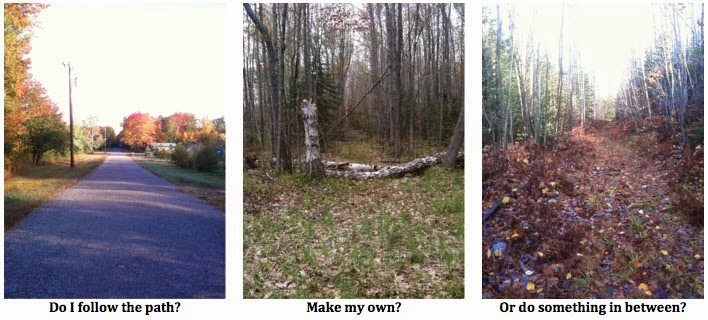In the previous post, an anonymous guest blogger chronicled the training they received in order to use Doug Lemov's "taxonomy of effective teaching practice" as a tool for teacher development. The training made them more than a little uncomfortable. We learn why in Part 2.
*****
Before getting into the nitty-gritty, let me preface: My
stance on teacher training (fast-track, traditional, whatever) and Teach Like a Champion [TLAC] is
complicated. I worry that codifying teaching downplays the importance of
critical thinking and creativity among teachers and, more importantly, among their
students. I believe that there is some real tension at play, here, which I see
(primarily) in two arenas:
- Yes, we need to help teachers develop skills that will help them to stay afloat—but what about cultivating an interest in and passion for the things that make teaching awesome? (You know—moments like this and this and this and a million more.)
- It’s great to provide teachers with the opportunity for methodic practice in a safe setting (where no children will suffer from novice teacher errors)—but isn’t it, well, weird, this enthusiastic offering up of a step-by-step recipe for success? (Good teachers know better than to dumb down a complex concept into a set of instructions to be followed blindly.)
I’ve been grappling with these dilemmas since re-signing my
contract—committing, in a sense, to being a Lemov apostle. In effort to come to
peace with my uneasy feelings, I thought: What if I could turn back the clock
five years to 2007, and ask the 24-year-old, first-year teacher version of me
what sort of professional development would most benefit me. What if I asked my former-self, “Hey, Pat.
Would you rather do a deep analysis of your content area and explore
student-driven discovery learning via rich digital media sources? Or, would you
prefer to practice specific, concrete, actionable steps that you can integrate at school, tomorrow?”
I would have looked at you
like you were crazy. In 2007, I wanted—was in fact desperate for—the latter. After
my five weeks of Teach for America training, I was utterly ineffective. Part of
the problem was that no matter how I tried, I could not be the teacher that I
wanted to be. Perhaps the real problem,
the heart of the matter, was that I had not adequately envisioned who that
teacher was—how she presented material, interacted with kids, and planned
lessons. Tragically, I had not formed any real opinions on what effective
teaching might look like. Rather, I had adopted and internalized a few misguided
ideas from various (influential) sources, which were of little use. I really
and truly wanted someone to tell me what I needed to do and say so that I could
just get my kids to pay attention and listen and learn something, dammit.
Here’s the catch. I can’t
help but wonder if great teachers become great because they carve their own way—through
trial and error, critical thinking, and meaningful collaboration. They talk to
others and they think things through and they problem-solve and figure stuff
out—and they expect their students to do the same. Will my facilitation of this curriculum prevent teachers from making their own novel
discoveries, and from experiencing one of the most rewarding elements of our
noble profession? Or, alternatively, will this curriculum give these teachers
the framework that they need, within which to freely develop their own authentic
teacher identity? I’m not certain.
To Be Continued

Sounds like a wise novice teacher. The longer I teach, the more holistic I think good teaching is. It involves just what you're talking about here, doing (and modeling) what you want students to do, and asking them to do things that you would find meaningful at their stage of experience. It sounds like, with support, you'll be able to find a safe path through the woods of champions.
ReplyDelete